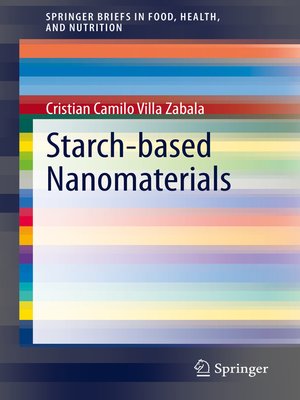Starch-based Nanomaterials
ebook ∣ SpringerBriefs in Food, Health, and Nutrition
By Cristian Camilo Villa Zabala

Sign up to save your library
With an OverDrive account, you can save your favorite libraries for at-a-glance information about availability. Find out more about OverDrive accounts.
Find this title in Libby, the library reading app by OverDrive.



Search for a digital library with this title
Title found at these libraries:
| Library Name | Distance |
|---|---|
| Loading... |
Starch is one of the most important natural and biodegradable polymers on Earth. It is used by many plants as an energy reserve, and due to its biocompatibility and relatively easy structural modification, it is widely used in the cosmetic, food, pharmaceutical and materials industries. In recent years, interest in starch has increased due to the development of starch-based nanomaterials. Nanomaterials are small particles—diameters ranging from 10 nm to 500 nm—that can be highly crystalline (nanocrystals) or completely amorphous (nanoparticles). Owing to their versatility, starch-based nanomaterials can be used as carriers of bioactive molecules to improve medical treatments or nutrient absorption. They can also be used as reinforcement in composite materials, improving their mechanical and barrier properties, and new potential applications are continuously reported in the literature. This brief provides a quick guide to the exciting world of starch-based nanomaterials, including their chemical and physical characteristics as well as their synthesis methods and most common applications.







